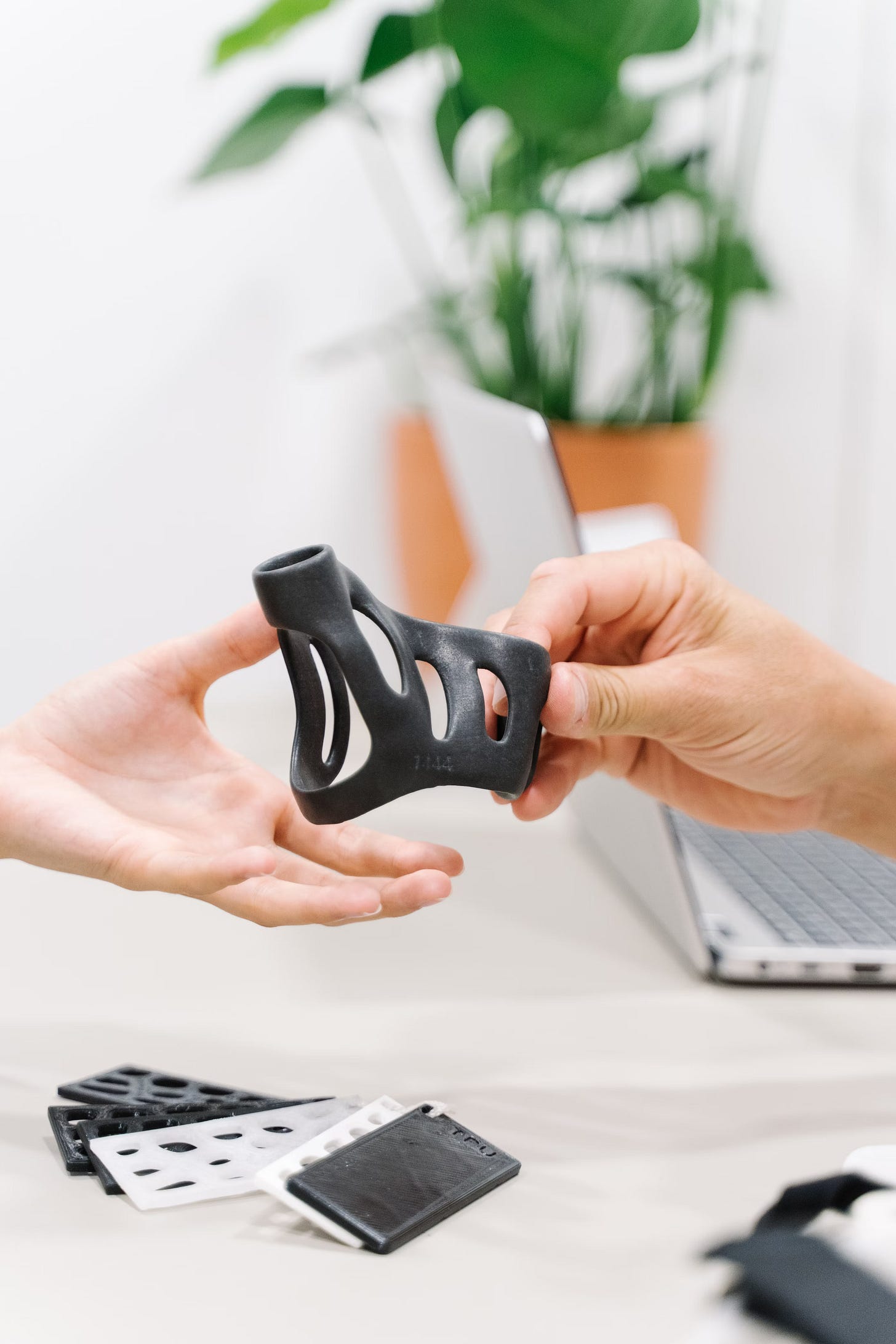Manufacturing
Next: Summary of Local Production
Manufacturing
We’ve earlier discussed how designs are slowly but steadily becoming open sourced, ways to speed up the process and how light-weight manufacturing tools are making production locally or even at home possible.
FabLabs are digital fabrication laboratories set up for people and entrepreneurs to test their ideas and ultimately turn into new products. Fablabs are equipped with the range of of advanced digital manufacturing tools. Tools such as computer-assisted design software, 3D printers for several materials like plastic or wood, CNC machines for wood, metal and plastic, open-source electronic kits like Arduino etc. The FabLabs enable anyone to design and create objects themselves or to use ready-made designs from the Internet. Anything can in principle be made in FabLab. The idea originated in MIT by Professor Neil Gershenfeld.
Some cities have used the concept and opened it upto unemployed or just about anyone who wants to learn the new tools of manufacturing. Making stuff and eventually getting paid gives meaning to life that is missing if you have nothing concrete to do.
This is a great first place to start thinking how manufacturing can be decentralised. Designs are open sourced, available anywhere globally, to be used as such or localised to own regional preferences and then reshared.
The manufacturing facility can be local or somewhere close by for more complex items. They could be privately owned, by municipality, by an associations or by crypto project where incentives are orchestrated by token designs.
First things to produce would be everyday objects – electric appliances, chairs, tables, cabinets and power tools like electric drills. With as little as possible parts brought in from abroad. For electric safety perhaps batteries and large electric motors need to be acquired from outside. All based on open-source designs, made to last and easy to repair rather than todays planned obsolesce.
Open design also allows to create modular products. For example, have detachable batteries or common power sources that a multitude of appliances use.
Over longer period also the FabLab production tools like 3D printers will be based on open designs.
Custom made orthoses designed digitally and created with a 3D printer. Photo by Tom Claes on on Unsplash
Raw Materials
Manufacturing of course needs raw materials.
Pretty much everything is made starting with a few feedstock chemicals as we discovered a few weeks back. This is because oil has been abundant and cheap and refineries turn these feedstocks out in volumes. Most of chemical industries have formed around these material streams. Metals can be recycled locally by mini-mills.
Mini-mills
Mini-mills are regional small-scale mills that recycle old metals by melting them. Metals can be recycled in this way indefinitely. Most mini-mill today are for steel and primarily use scrap steel. They use as feedstock scrap steel like construction materials, old cars, appliances. This approach is cheaper than traditional mills, which rely on iron ore and other raw materials and uses a mere fraction of energy.
Melting in mini-mills is done in electric arc furnaces. The traditional integrated mills in turn use coal and/or coke for energy. There are newer emerging designs for traditional mills using hydrogen making it also environmentally friendly.
Mini-mills also allow quickly to change the type of steel they produce to meet market demands.
Flow-chemistry
With flow chemistry, it is possible to scale down chemical processes and use the base feedstocks to generate everything we use today like fibers for clothes, ropes, mats, plastics for all kinds of uses (packaging, medical uses, furniture, building material), adhesives, rubbers, colorants, medicines, pesticides etc. locally. Conductive polymers can even be used to print various electronic components like antennas, sensors, memresistors, batteries, displays, OLEDs etc.
The recipes for production machinery can all be made open source. This includes direct air capture, running the Fischer-Tropsch process, creating flow chemistry building blocks, assembling them to right order for different end-products, building 3D printers, CNC machines, weavers and whatnots and finally production flows for making all kinds of goods with those tools. Being open source makes them globally available for localization and adaptation to all kinds of niche use cases and smaller user groups.
Where do the designs for all of these products come? Most of our needs are met with solutions that are at least hundreds of years old and the newer stuff like home appliances, white goods, bicycles, electric motors are decades old. It’s more of a question of adapting them to the new production system envisioned here.
But that’s not all. It turns out that common objects can be implemented with radically smaller use of materials and hence smaller use of energy. There are two approaches to this. In generative design the system designer sets parameters for the end results (like how much weight a chair needs to carry and human anatomy guidelines), then machine learning and simulation software are let loose to generate numerous alternatives. These alternatives are checked and finally at some point the design improvements slow down. Then the final result is chosen. This can produce up to 80% reduction in materials (if we believe leading sales people, and who wouldn’t).
Another approach is to look at nature has solved the problems over the billions of years of trial and error. We already discussed biomimicry. As example plants and animals living in low light conditions have evolved to have all kinds of lens designs that concentrate light so to improve sight or photosynthesis. All these designs use materials from the environment around and are a good starting point for newer and better solutions.
What is needed on top, is the right reward scheme for designing and sharing. We’ll return to the topic later.



